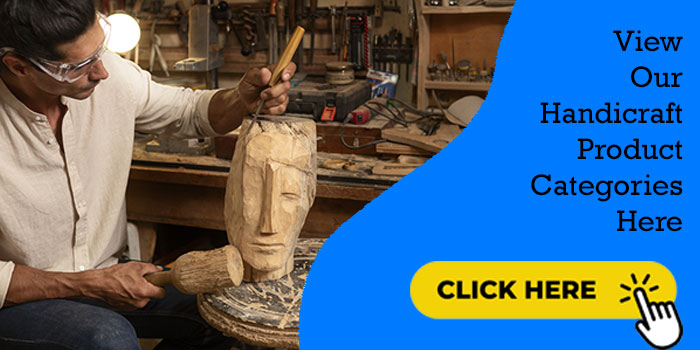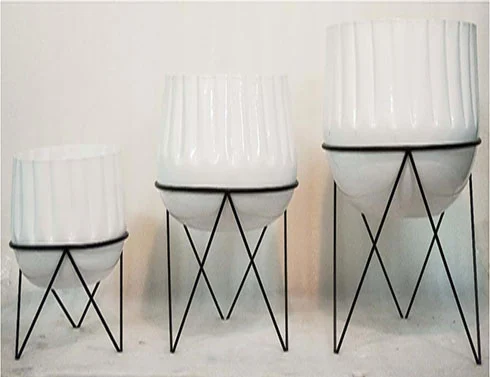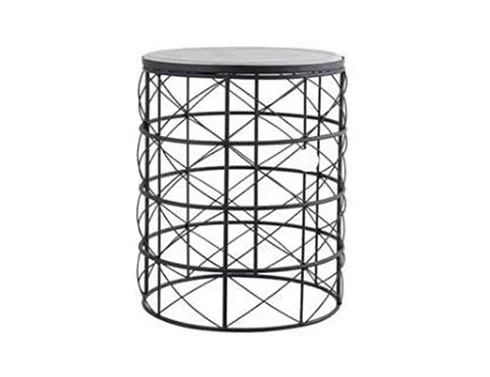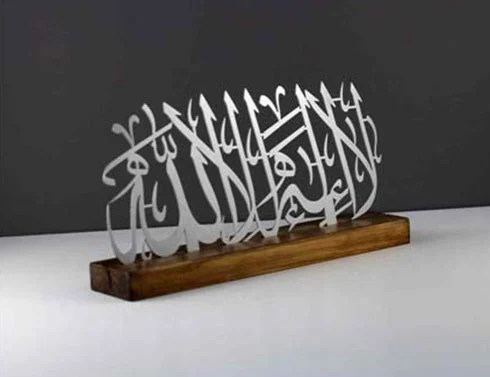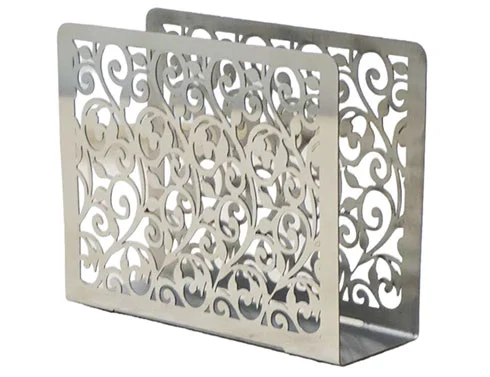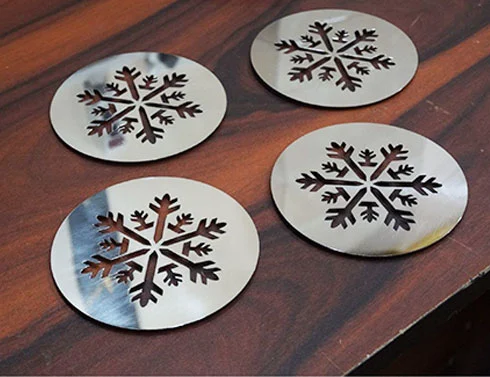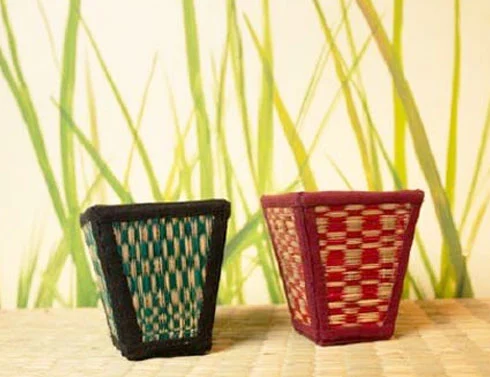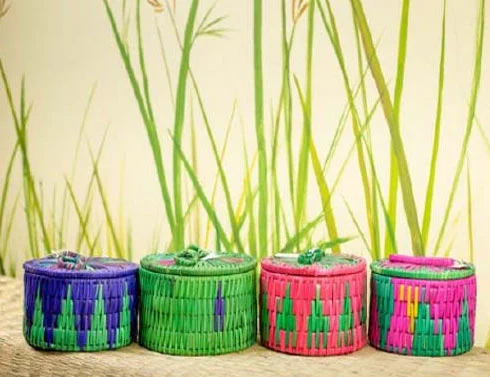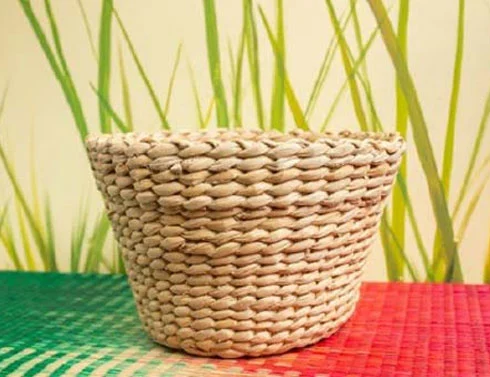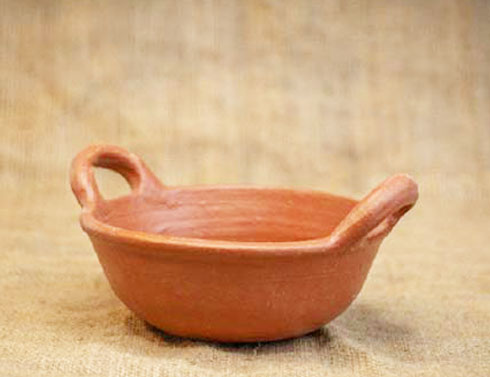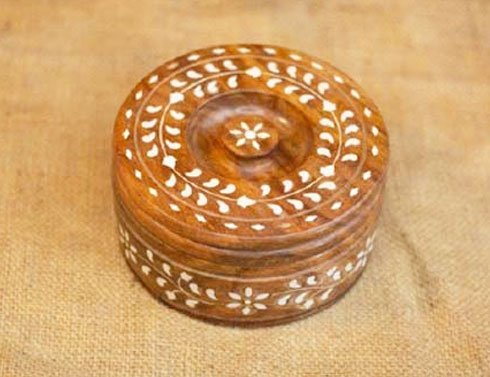Handicraft Export from India - A Flourishing Industry
Introduction
A journey through Time, stitched in Silk and Sculpted in Wood
Handicraft Export from India has been quite prominent since the times of bustling trade along the ancient Silk Road. Traders from distant lands have come to our country in search of intricately woven silks shimmering with captured sunlight, statues carved with sandalwood, stories etched in their curves, and jewellery that catches firelight with a thousand facets. These are not just souvenirs. These handcrafted pieces of our history and tradition connect people from across all continents and represent the enduring legacy of Indian handicrafts.
Today, Indian Handicraft Exports have grown into a powerful economic driver, estimated at a staggering $15 billion USD annually, providing income and livelihood to millions. However, the true purpose of these items goes deeper—they act as cultural ambassadors, carrying the rich tapestry of Indian heritage to the world.
One of the notable aspects of handicrafts is that they are not limited to a particular region or culture. From the intricate embroidery depicting ancient legends on Kashmiri Shawls to the delicate filigree work adorning South Indian temple jewellery, each item is imbued with age-old techniques and a unique narrative. This expansive guide delves into the fascinating world of Indian Handicraft exports. We will not just explore the Indian Handicrafts market and talk about the dazzling array of products in the country but also learn more about the factors and challenges faced by the export market.
The Allure of Indian Handicrafts: A Legacy Woven in Skill and Tradition
Indian handicrafts always possess a captivating allure that transcends mere aesthetics. Every element carries the weight of history, whispers of ancestral skills and a vibrant tapestry of cultural influences.
A Legacy Steeped in Tradition
Indian handicrafts boast a rich history dating back millennia. Some techniques have been passed down through generations and practised for over 4000 years, ensuring the preservation of cultural heritage and the constant evolution of traditional practices.
A Kaleidoscope of Regional Delights
One of the core reasons for the Indian handicrafts market’s popularity is its diversity. Each region boasts its own unique specialists, reflecting local materials, cultural influences, and artistic styles. The intricate silk brocades of Varanasi, the vibrant terracotta pottery of Bengal, and the exquisite carving of Kerala provide a glimpse into the rich tapestry of Indian culture.
A Sustainable Symphony with Nature
Indian handicrafts are often deeply rooted in a tradition of respect for the environment. Artisans frequently use indigenous materials like bamboo, jute, wool, and other materials to ensure the sustainability of their craft. This helps them support the allied segments and improve the livelihood of other core members of their community.
A Dazzling Array of Treasures
The variety of Indian handicraft choices is quite extensive. Buyers can choose anything from richly woven textiles like Kanchipuram sarees and Kashmiri shawls to gleaming metalware crafted in brass, silver, and bronze. The list does not stop with textiles and metal. It also includes intricately carved wooden furniture, delicate pottery showcasing regional motifs, and stunning jewellery with precious and semiprecious stones. This empowers the industry to cater to the unique tastes and purposes of clientele from across the globe.
These unique characteristics, intertwined with the passion and skill of Indian artisans, increase the value of these processes. Customers believe owning a piece of Indian handiwork is not just about acquiring a beautiful object. It is about embracing a timeless tradition and honouring cultural diversity and heritage.
Why India Dominates Reigns Supreme in Handicraft Exports: A Multifaceted Advantage
India holds the title of the largest exporter of handicrafts globally. This is primarily due to the diverse and exquisite products in the market. The country has been able to retain this position due to various reasons, including of
A Legacy of Skilled Artisanship
The skills relevant to Indian handicrafts are often passed down through generations, ensuring the preservation of traditional techniques like handloom weaving, metal casting and wood carving. This deep-rooted knowledge base ensures consistency in quality and a unique aesthetic appeal that sets Indian handicrafts apart. Many artists train apprentices, fostering a vibrant community of skilled craftspeople. This initiative does not just ensure the continuation of traditional techniques but encourages innovation and adaptation to contemporary demands. The Government has also developed various programs to help people who aspire to excel in this field. These also include design, quality control and business management training to help them cater to changing market preferences and navigate the global market effectively.
Price Advantage and Efficient Production
India boasts a large and readily available workforce of skilled artisans. This, coupled with using locally sourced and readily available materials, allows for efficient products at competitive prices. The artists usually work in clusters or cooperatives, allowing them to leverage bulk purchasing of materials and streamlined production processes, leading to cost-effective processes. Another aspect is that traditional handicraft production relies on manual skills, leading to lower overhead costs than heavily automated industries. This allows them to provide competitive prices while preserving the unique, handcrafted nature of the products.
Government Support: A Boost for the Industry
The Government offers various initiatives to support traditional artisans and people aspiring to excel in the field. This is inclusive of
Skill Development Initiative:
The Ministry of Textiles, Government of India, along with various state governments, implement regular skill development products like the Scheme for Handloom Weavers Welfare and Ambedkar Hasthilp Vikas Yojana at subsidized prices to provide holistic training to support Indian Artisans
Financial Assistance:
Schemes like Handicrafts Marketing and Service Support Schemes offer loans and subsidies to handicraft businesses looking to expand, modernize and even participate in international trade fairs.
Export Promotion Initiative:
Agencies like the Export Promotion Council for Handicrafts (EPCH) and the Indian Institute of Handloom Weavers Service (IIHWS) organize international trade fairs and exhibitions, showcasing Indian handicrafts and facilitating connections with global buyers. Additionally, these agencies provide information and support services to handicraft exporters.
By combining these advantages, India creates a robust ecosystem that fosters the creation of high-quality handicrafts at competitive prices, solidifying its position as the global leader in the industry.
Top Export Destinations for Indian Handicrafts: A Global Audience Awaits
Indian Handicrafts have captivated audiences worldwide, finding their place in homes and collections across continents. Here are some significant countries importing Indians and the reasons behind their popularity.
United States
Market Share:
US accounts for about 38% of the Indian handicraft exports
Reasons for Popularity
Affordability and Variety:
Indian handicrafts offer an appealing combination of high-quality and competitive prices, catering to a wide range of budgets. The diverse choices in the market provide multiple options for customers.
Rich Cultural Heritage:
The intricate designs and traditional techniques employed in Indian handicrafts resonate with American consumers who appreciate cultural authenticity and craftsmanship.
United Kingdom
Market Share:
The region has been a long-standing importer of Indian handicrafts, with a strong focus on homemade carpets and other textile products
Reasons for Popularity
Colonial Connection:
The historical ties between India and the UK have fostered a familiarity with Indian culture and art forms among customers, leading to a sustained interest in Indian handicrafts.
Unique Design Aesthetics:
The vibrant colours, intricate patterns, and traditional motifs appeal to British consumers in particular.
Europe
Market Share:
Countries like Germany, France and Italy are prominent importers of Indian handicrafts
Reasons for Popularity
Focus on Quality and Luxury:
European consumers often seek high-quality, handcrafted products, and Indian handicrafts fulfil this desire, offering intricate details and a sense of luxury at a competitive price point.
Home Decor Trends:
The growing popularity of bohemian and ethnic styles in home decor has fueled the demand for Indian handicrafts, which add a touch of global flair and cultural richness to European homes.
Middle East (UAE, Saudi Arabia)
Market Share:
There has been a rising demand in these markets
Reasons for Popularity
Affluence and Investment:
The affluent population in the Middle East often invests in high-quality decorative items, and Indian handicrafts meet their expectations
Religious Significance:
Certain Indian handicrafts, like intricate brassware and handcrafted prayer rugs, cater to the spiritual practices and cultural preferences of Middle Eastern consumers
Asia-Pacific
Market Share:
The Asia-Pacific region, particularly Japan and Australia, is emerging as a promising market for Indian handicrafts.
Reasons for Popularity
Minimalist Aesthetics:
The clean lines and elegant design of some Indian handicrafts resonate with Japan’s minimalist aesthetic preference.
Appreciation for Craftsmanship:
Australians appreciate the skilled craftsmanship and attention to detail evident in Indian handicrafts, valuing the unique stories each piece carries.
These are some of the top export destinations for the Indian handicraft market. The industry is gaining popularity owing to its rich heritage, unique aesthetics and competitive pricing.
Factors Shaping Demand
Some of the common elements that influence the demand for Indian handicrafts globally include
Growth of Online Marketplace:
Digital marketing has made it easier for international buyers to discover and purchase Indian handicrafts, leading to a wider market reach and increased demand.
Focus on Sustainability:
The increasing consumer consciousness about sustainability resonates with the traditional and eco-friendly production methods employed in Indian handicrafts.
Rising Interest in Home Décor:
The growing interest in personalized living spaces has fueled the demand for unique and handcrafted décor items, creating a solid market for Indian handicrafts.
Emerging Markets:
While the established markets remain significant, new regions are showing promise for Indian handicraft exports, including:
Africa:
With an increase in the middle-class population with disposable income, African countries are gradually showing interest in high-quality handicrafts, including textiles and jewellery.
Latin America:
This region is experiencing a rising demand for handcrafted goods. Latin American consumers are showing an interest in the vibrant colours and unique aesthetics of Indian handicrafts
How do you start a handicraft export business in India?
The enticing and alluring world of Indian Handicraft exports offers lucrative opportunities for businesses seeking to tap into this vibrant market rich in cultural heritage and exquisite craftsmanship. However, entrepreneurs might not know the ideal way to start this venture. Here is a roadmap to guide you through embracing this incredible and profitable journey.
Find your niche market and target audience.
The Indian Handicraft market is quite extensive, and businesses must first determine the ideal product. This could be anything specific to a region, a product, or even a specialized consumer group. Once they finalize the product, it is imperative to research the competition in the segment. People can check online, as most companies tend to have a strong online presence.
Sourcing high-quality handicrafts and ensuring ethical production practices
The next step is to source the products from reliable suppliers who prioritise quality and ethical production. People can visit trade fairs and other events to connect directly with artisans. Verifying their certifications is imperative to understanding their processes and practices.
Understanding legalities and export procedures
When business owners export their products, they must adhere to certain custom regulations and even source the necessary documentation. They can seek assistance from Government agencies like the Export Promotion Council for Handicrafts (EPCH) and the Directorate General of Foreign Trade (DGFT). They can also connect with reputed companies like IMPEX Enterprises, which will provide holistic support to people venturing into this segment. It would be prudent to get all the documentation to prevent any complications in the future.
Embrace the Digital Marketplace
The rise of e-commerce platforms has revolutionized Indian Handicraft exports. Companies must develop a solid online presence to connect with buyers in the national and international markets. This will also help people connect with artisans interested in marketing their crafts. Business owners should list their products on platforms like Amazon Karignar and other popular portals. They can even create their own e-commerce website to showcase their products and brand stories.
Resources to Support Your Handicraft Export Journey
The government of India has taken various initiatives to support those in the handicraft segment. Business owners can familiarize themselves with these agencies as they will provide the necessary support and guidance. Here are some of the most popular agencies in the country
- Export Promotion Council for Handicrafts (EPCH)
- Directorate General of Foreign Trade (DGFT)
- Federation of Indian Export Organizations (FIEO)
- Regional Handicraft Associations
Companies can accumulate a competitive advantage in the market by taking advantage of the expertise and resources provided by these organizations. They will be in a position to provide the knowledge and connections needed to navigate export procedures, identify potential markets and eventually achieve success in the global arena.
The Future of Indian Handicraft Exports: A Tapestry Woven with Promise
The future of Indian Handicraft exports is vibrant tapestry woven with both potential challenges and promising trends. While there are some hurdles, its rich heritage, cultural significance and adaptability help the segment to focus on continued growth and global recognition.
Challenges to Overcome
Competition:
The global handicraft market is fiercely competitive, with countries like China and Vietnam offering similar products at lower prices. Indian Exporters must focus on innovation, design differentiation and quality control to maintain a competitive edge.
Counterfeit products:
Imitation of traditional Indian designs can be a significant concern. Business owners are working with the government to enforce more robust intellectual property protection measures and consumer education to combat the issue.
Fluctuating Global Demand:
The recent pandemic and economic downturns have affected the global demand for handicrafts. Experts have predicted diversifying product offerings and exploring new markets can help mitigate the risk.
Promising Trends Shaping the Future
Online Marketplace: The rise of e-commerce platforms like Amazon, Karigar, and Etsy provides a powerful tool for reaching a global audience. Indian handicraft exporters can leverage these platforms to showcase their products and connect directly with international buyers.
Focus on Sustainability
Consumers are becoming increasingly mindful of ethical and sustainable practices. The traditional, often eco-friendly production methods used by the Indian Handicraft industry resonate with this trend. When businesses highlight their sustainable practices and fair labour-sourcing techniques, it could provide a strong marketing advantage.
Increased Appreciation for Authenticity
The growing interest in cultural heritage and handcrafted goods bodes well with consumer demands. Customers are seeking unique aesthetic pieces with a story and a value proposition that embody the spirit of Indian Handicrafts.
An Optimistic Outlook
Despite the challenges, the future of Indian handicraft exports seems bright. The industry’s rich heritage, artisan skills, and ability to adapt to meet customer expectations have always worked in its favour. Studies show that the Indian handicraft industry will continue to grow with continued Government support, industry innovation, and a guide on ethical and sustainable practices.
Conclusion
Indian Handicrafts: A Timeless Treasure
Indian Handicrafts boast a rich history and a dazzling array of regionally-inspired treasures. From intricate textiles to gleaming metalware, each piece embodies cultural heritage and the enduring spirit of Indian artistry. India reigns supreme in handicraft exports, captivating the world with affordability, exquisite craftsmanship and a deep respect for tradition. The US, UK, and Europe are the major importers who appreciate the unique aesthetics and sustainable production methods. The segment is consistently evolving with a keen focus on sustainability, e-commerce and a growing appreciation for authenticity. This enhances the handicraft industry’s position as the global symbol of cultural heritage and exquisite artistry.
